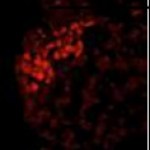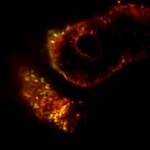induced pluripotent stem cells
Getting cells to revert to a stem-like state – creating so-called induced pluripotent stem (iPS) cells – was a true revolution, but the technique invented in 2006 is only half the game. The first challenges include getting enough adult cells to undergo the “reprogramming” in culture to be of use and removing those traces of “priming” that distinguish them from true embryonic stem cells. The second is keeping them in the iPS state – that is, holding back their urge to differentiate – in lab conditions. And then there is the challenge of directing their differentiation in the way that you want…
In the future, stem cells created from our own skin cells will be used to renew damaged organs or grow new ones. We know this promise has often been made before, but the latest research in the lab of Dr. Jacob (Yaqub) Hanna is producing some solid findings that may make you believe in the possibility.
Just a little over a month ago, we reported that Hanna and his group had discovered a “brake” that keeps our cells from easily reverting to an embryonic-stem-cell-like state (induced pluripotent stem cells, or iPS cells). Removing that brake enabled them to ramp up the conversion process – in…
First, there was the great hope of induced pluripotent stem cells (iPSCs), and then there was the inevitable letdown. When the announcement came, in 2006, that simple adult skin cells could be reprogrammed – reverted back to an embryonic stem cell state by the addition of just four genes – it seemed like an almost magical solution to the problems of using stem cells from embryos. But then some studies started to find that the reprogramming process was not perfect – iPSCs were similar, but not identical, to the cells from early embryos. More critically, only about 1% of the cells treated with…

